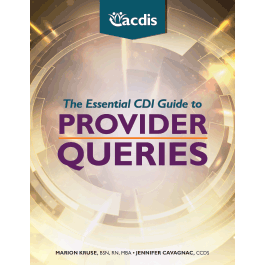Book excerpt: What are the Recovery Auditors anyway?

to Provider Queries
Formerly known as Recovery Audit Contractors (RAC), the Tax Relief and Health Care Act of 2006 created Recovery Auditors to identify Medicare overpayments and underpayments made on claims of healthcare services provided to Medicare beneficiaries. Overpayments occur when healthcare providers submit claims that do not meet Medicare’s coding or medical necessity policies. Underpayments occur when a healthcare provider submits a claim for a simple procedure, but the medical record reveals that a more complicated procedure was actually performed.
One challenge, however, is that contractors receive compensation for their efforts based on a percent of the claims that they recover and are therefore incentivized to target overpayments, critics say. Based on that critique, in 2012, the American Hospital Association (AHA) filed a lawsuit against CMS claiming that its denial practices violate federal law.
Nonetheless, in fiscal year (FY) 2014, RAs collectively saved Medicare $2.57 billion in a combined 1,117,057 identified and corrected overpayments and underpayments.
RAs need CMS’ approval to pursue record reviews for specific DRGs, and each contractor must publish its focus areas publicly. CDI programs have likewise identified areas of concerns and added these reviews to their to-do lists. For example, CDI program directors should pull MS-DRG lists by frequency and compare their top DRGs to the list of target areas that their regional auditor identified.
Despite RAs’ reported success is recouping and clarifying Medicare claims, the AHA finds that when hospitals appeal their denials, they typically win. AHA’s RACTrac Report indicated that hospitals appeal more than 40% of their denials with a roughly 75% success rate.
According to a 2012 poll, 32% of CDI programs conduct reviews to audit-proof their records from RA targets. Furthermore, although Medicare Quality Improvement Organizations (QIO) maintain statutory authority to monitor the medical necessity of inpatient admissions. RAs expanded their reviews to include medical necessity in FY 2011. To handle those audits and prepare their facilities, CDI specialists increasingly migrate into audit prevention and analysis roles.
Nevertheless, QIOs provide yet another layer of government oversight. By law, the QIO’s mission is to improve the effectiveness, efficiency, economy, and quality of services delivered to Medicare beneficiaries. Its core functions, according to CMS, include the following:
- Improving quality of care for beneficiaries
- Protecting the integrity of the Medicare Trust Fund by ensuring that Medicare pays only for services and goods that are reasonable and necessary and that are provided in the most appropriate setting
- Protecting beneficiaries by addressing individual complaints expeditiously
To complicate matters further, RAs began requesting queries along with their medical record reviews. CDI programs that had no policies in place struggled to determine whether their facility considered queries to be a permanent part of the medical record and therefore recoverable by auditors, or whether queries were business records related to the care and, therefore, possibly not required for submissions.
Editor’s note: This article is an excerpt from the book The Essential Guide to Provider Queries. To learn about the current state of the AHA’s RACTrac program, click here. To read about writing appeal letters, click here. To learn more about CDI and denials management as a whole, read the September/October 2017 edition of the CDI Journal.
